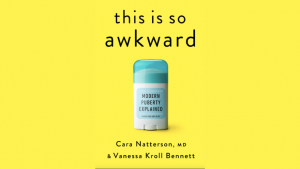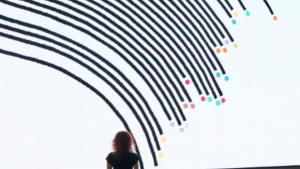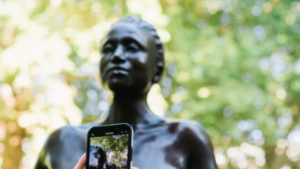Together with Dutch Design Week and Design Indaba the inaugural antenna conference is back for its third year. This year we brought together the next generation of innovators as they presented their projects during Dutch Design Week.
It is worth noting that the antenna platform is guided each year by the Sustainable Development Goals (SDGs) and its collection of 17 global goals, which form part of a universal call to action to end poverty, protecting the planet and ensuring peace and prosperity.
Most of the speakers’ projects at this year’s antenna conference corresponds with at least one goal on the list, which was set by the United Nations General Assembly in 2015. This allows us to curate a list of speakers who are effectively delivering creative change in their environment.
From Pratt University, Garett Benischs, Sum Waste looks at #6 on the Sustainable Development Goals (SDGs) list which is clean water and sanitation. In this project, Benisch discovered that New York City processes 1.3 billion gallons of sewage every day. This sewage is treated using micro-organisms, which in turns convert the waste into biosolids.
Sum Waste: Rethinking Waste in New York City. from Garrett Benisch on Vimeo.
Using this information, he created Sum Waste, a pen whose barrel and ink are both made from treated biosolids. The young designer believes that this project could create a relationship between New York’s waste management and the citizens of the city.
At #10 on the SDG list we have reduced inequalities where both Duncan of Jordanstone College of Art and Design graduate, Katie Brown and Parsons University graduate, Camila Chiriboga sit. Both of these projects focus on ending stigmas by means of design.
For Brown’s project, Exploring Hearing Aids & Super Normal Design, she looks at the future of hearing aids, and she aims to challenge the stigma that surrounds the use of a hearing aid. More importantly, in her research, she takes a look at how it can be redesigned in a more user-friendly manner.
"The research aims to understand the different social and cultural relationships that exist, and their link to hearing aids. It will involve the experiences and perspectives of wearers, non-wearers, healthcare professionals and manufacturers of hearing aids,” explains Brown.
In Chiriboga’s project, the designer created a tool called, veº which sits at the intersection of fashion, health and technology. With this, she provides a simpler way for people who are blind and visually impaired to understand what they are wearing.
Veº allows the visually impaired to choose their own clothes. Being able to do this empowers people and allows them to become more independent, and to inspire others towards a more inclusive design.
Another speaker on this year's antenna stage will be Antya Waegemann whose project corresponds with #16 on the SDG list as she tackles Peace Justice & Strong Institutions. Her project, When No One Believes You is a redesigned rape kit.
The kit is a response to the growing number of sexual assault cases and it contains six different design interventions for use by victims, nurses and police. This includes an emergency sexual assault resource app, a product that detects DNA during the exam, and a rape kit tracking system.
The Current Rape Kit from Antya Waegemann on Vimeo.
With this product, Waegemann hopes to improve the experience of having to use a rape kit and to increase the use of testing using rape kits.
Lastly, we look at Thom Bindel's project, Ecosystem Kickstarter which matches up with #15 on the SDG list, Life on land. With this project, Bindel, who graduated cum laude from the Design Academy in Eindhoven wants to improve the resilience of communities and natural ecosystems by sustainably restoring landscapes.
Ecosystem Kickstarter is comprised of a foldable structure that is made from biodegradable cardboard fibres, which is then applied to a slope and filled with local soil to function as a terracing structure. Inside the product are both pioneer seeds and nutrients added during the production process which creates a rooting system.
“When there is a sufficient rooting system, the cardboard decomposes and adds carbon to the soil. The anti-erosion function will be taken over by the new vegetation, improving water infiltration and soil structure to help the ecosystem get over the ecological threshold,” according to the project description.
Read more:
Meet the speakers at this year's antenna conference
Here is what to expect at the #antenna2019 exhibition
Six designers tackle sustainability from food, waste and even death






